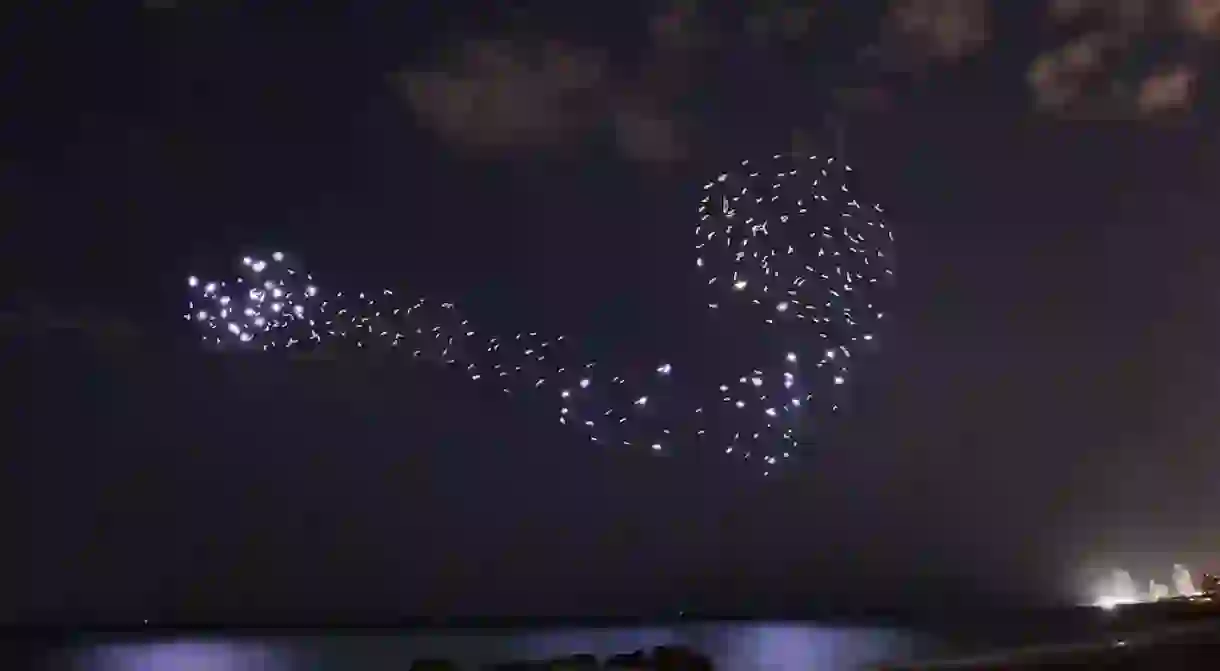How Studio Drift Programmed 300 Drones to Flock in Harmony at Art Basel Miami Beach

Yet again, Miami Art Week teemed with visual wonders—but it was Franchise Freedom—a flying sculpture by Studio Drift in partnership with BMW that stole this year’s show. Above a moonlit ocean, the Amsterdam-based tech art collective unleashed a swarm of 300 illuminated drones programmed to mimic the grace and complexity of aviary flight patterns.
Pioneering artists Lonneke Gordijn and Ralph Nauta are the masterminds behind Studio Drift, a Dutch studio founded in 2007 that has since astounded international audiences with every new installation and performance. Inspired by both nature and progress, the multi-disciplinary studio specializes in the skilled manipulation of new technologies to shatter the boundaries of traditional art forms and consistently re-define the sphere of their craft.

On the evening of December 6, in partnership with BMW and Pace Gallery’s new Future\Pace initiative, Studio Drift premiered Franchise Freedom:the graceful convergence of light and natural movement with cutting-edge technology. As a crowd of stunned viewers looked on, a swarm of 300 flying sculptures performed an unprecedented dance above the ocean at dusk.
Employing a series of decentralized algorithms, Studio Drift programmed the drones to mimic aviary movement in one of the most complex works of performance art to date. “To create Franchise Freedom, Studio Drift studied the natural flight patterns of starlings and translated them into software that was specially developed and embedded in the drones,” the press release explains. “Their technology is based on ongoing university research on flocking behavior, as the principles of self-organization have become more and more relevant in our changing world.”

Equally as complex is the conceptual nature of Franchise Freedom, the product of extensive musings about the delicate balance between “the self” and “the group”. The performance is a nod to the sacrifice each individual must make in exchange for inclusion in a collective community. By bowing to “the group”, freedom is reduced to a mere illusion.
Despite the inherent sadness of this sacrifice, Franchise Freedom showcased the sheer beauty of orchestrated movement. “It was Edmund Burke—in the middle of the 18th century within his well-known treatise on the sublime—who wrote of beauty as being a movement,” commented Hildegard Wortmann, the Senior Vice President of BMW. “This is what Studio Drift and [BMW] both wholeheartedly subscribe to. Franchise Freedom is a technological wonder and a breathtaking aesthetic experience.”

In the age of virtual reality, Studio Drift is keen on drumming up a rivaling fascination with real-life wonders. “Everything can be simulated in animation and virtual reality,” says Lonneke Gordijn, “but we think there is an importance in creating real experiences that you can feel and see with your own eyes in the real world, not only through a screen.”













